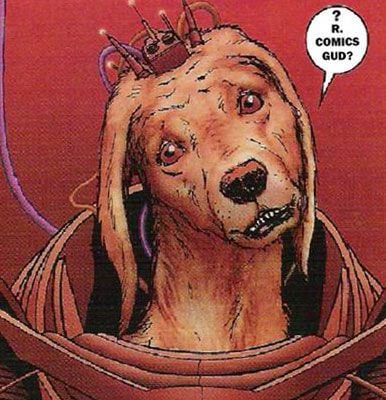The Visual Rewriting of Promethea
Promethea, as a comic book figure, is a visual character just as much as she is a literary character. Therefore, her visual appearance means as much as her actions or her words. Partly, this has to do with what Richard Reynolds calls one of the “crucial signs of super-heroism.” In his book, "Super Heroes: A Modern Mythology," he argues that “an individual costume is an example of parole – a specific utterance within this structured language of signs... a costume can be ‘read’ to indicate an individual hero’s character or powers."*
This certainly holds true for Promethea, as her costume is a microcosm of her entire character. However, the symbols that exist in Promethea's costume can be rewritten just as easily as words can, and that is whatMoore
With the use of Barbara Walker’s "The Woman’s Dictionary of Symbols and Sacred Objects,"Moore Phoenix
Some of the symbols can be translated simply, such as thePhoenix Phoenix Phoenix Laurel
The Caduceus, Scarab, and Ankh, however, all have one thing in common, and that is that they are all tied together with the idea of the power of life and of healing, which is all very traditional, and not rewritten in the least. Likewise, Promethea’s relation to Hermes and Thoth is very simple, as those two gods are the gods of the creative word.
However, this is significant because of the way that these symbols have been rewritten in the history, and presumably,Moore
This is seen in the Scarab and the Ankh as well. The Scarab was related to the all-important Sun god, only so long as the Egyptians believed that Scarabs were only male. Soon, upon the discovery of the falsity of this statement, they were rewritten as a nurturing, lunar symbol. Likewise, the Ankh was once a symbol of female power, as the symbol of the Great Goddess. Soon, however, it was rewritten as a symbol of life and stripped of any specific meaning.
Therefore,Moore Moore
*Reynolds, Richard. "Super Heroes: A Modern Mythology".Jackson
This certainly holds true for Promethea, as her costume is a microcosm of her entire character. However, the symbols that exist in Promethea's costume can be rewritten just as easily as words can, and that is what
With the use of Barbara Walker’s "The Woman’s Dictionary of Symbols and Sacred Objects,"
Some of the symbols can be translated simply, such as the
The Caduceus, Scarab, and Ankh, however, all have one thing in common, and that is that they are all tied together with the idea of the power of life and of healing, which is all very traditional, and not rewritten in the least. Likewise, Promethea’s relation to Hermes and Thoth is very simple, as those two gods are the gods of the creative word.
However, this is significant because of the way that these symbols have been rewritten in the history, and presumably,
This is seen in the Scarab and the Ankh as well. The Scarab was related to the all-important Sun god, only so long as the Egyptians believed that Scarabs were only male. Soon, upon the discovery of the falsity of this statement, they were rewritten as a nurturing, lunar symbol. Likewise, the Ankh was once a symbol of female power, as the symbol of the Great Goddess. Soon, however, it was rewritten as a symbol of life and stripped of any specific meaning.
Therefore,
*Reynolds, Richard. "Super Heroes: A Modern Mythology".



2 Comments:
There's a lot of good material for discussion in the early issues of Promethea...so this may not be the last you'll hear from me on the subject...hehe.
Now *that's* an interesting take on things.
>>>> Promethea, as a comic book figure, is a visual character just as much as she is a literary character.
Moreso for some of us. :)
Really the only reason I bought Promethea for, ohhhh the last 22 issues or so was cause the art was so freaking good. (And it *Was* ohmyGawd,ohmyGawd,ohmyGawd.)
Which is my way of sayin' that I think the art was even more important than the traditional superhero type comic, just because it was so intricate and breathtaking.
>>>>However, the symbols that exist in Promethea's costume can be rewritten just as easily as words can, and that is what Moore does with the symbols in Promethea.
I'm not entirely sure what you mean here.
You're arguing that he's not actually "rewriting" or, actually altering the symbols in any way, right?
Just placing them back in their original context, right?
Other than that, interesting article. I like the subtle touches a lot more than the blatant, kinda lecture-y magical explanations in the middle there.
Y'seem to be arguing that Alannnnn M,
Post a Comment
<< Home